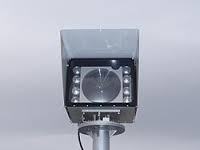Free Space Optics Market is Expected to Witness Significant Growth By 2027Posted by Aarti on February 3rd, 2017 Free space optics is gaining popularity because of the many benefits it offers, including low installation cost, high bandwidth availability, high speed of data transmission, improved connectivity, etc. Moreover, free space optics technology is suitable for military as well as commercial applications, such as telecommunication. Free space optics works on the same principle as fiber optics technology, except that it uses air as a medium for transmitting information instead of fiber optic cables. Moreover, the setup for free space optics communication requires just a few hours for installation. These are some of the factors significantly driving the growth of free space optics market. However, free space optics market faces a few challenges. For example, before deploying the setup for free space optics communication between two points, the line of sight between the two has to be free of any obstructions, such as trees or buildings. Moreover, free space propagation can face interruptions because of fog and atmospheric turbulence among other things. Presence of fog can severely hamper the characteristics of the light wave being transmitted by absorption, scattering and reflection of the light wave. Atmospheric turbulence can cause scintillation, which can further increase the bit-error rate. These are some factors restraining the growth of free space optics market. A sample of this report is available upon request @ http://www.persistencemarketresearch.com/samples/13342 The market for free space optics can be segmented on the basis of component, type of data, type of modulation, applications, end users and region. On the basis of component, the market can be segmented into transmitters, receivers, transceivers, modulators, demodulators and others. Transmitters and receivers are used for one way communication whereas transceivers are deployed for two way communication. The different types of data transmitted using free space optics are image, voice, video and others. On the basis of modulation, free space optics market can be segmented as amplitude, frequency, phase and polarization. Further, on the basis of applications, the market can be segmented into aerospace and defence, telecommunication, healthcare, disaster management, storage area networks (SAN) and others. On the basis of end users, the market can be segmented into corporate and commercial. Region wise, the market is segmented into North America, Latin America, Western Europe, Eastern Europe, Asia Pacific, Japan and Middle East and Africa. North America is expected to dominate the global free space optics market over the forecast period. Free space optics is widely used in aerospace and defence industry in North America. Presence of established research centers in Western Europe and Eastern Europe are expected to contribute to the growth of free space market in the respective regions. Asia Pacific excluding Japan and Japan free space optic markets are expected to witness a significant growth in the near future, owing to the increasing investments being made by the government. A TOC of this report is available upon request @ http://www.persistencemarketresearch.com/toc/13342 The key players involved in free space optics market are Trimble Inc., fSONA Systems Corp., and LightPointe Communications Inc. among others. In order to maintain their position in the market, key players focus on acquiring smaller players, entering into partnerships and product innovations. For example, in November 2016, LightPointe Communications Inc. introduced an advanced point to point backhaul radio  Like it? Share it!More by this author |


